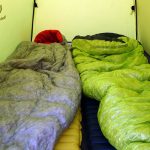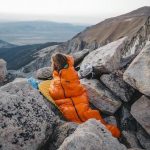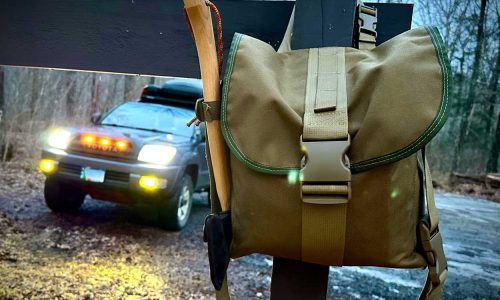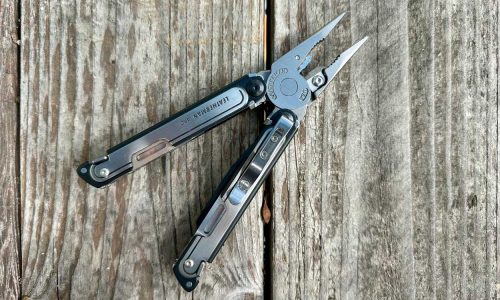Home » Gear Reviews » Hiking & Camping » Sleeping Bags » 3-Season Sleeping Bags (15F-29F) » Therm-A-Rest Navis 25-45
Therm-A-Rest Navis 25-45 Review
June 21, 2013
 78
78 The Good
- Lightweight
- Utilizes existing pack contents to reduce pack weight
- Compact
- Versatile
The Bad
- Requires a secondary component
- Limits sleep mobility
- Less versatile than others in class
The Therm-A-Rest Navis is half a sleeping bag—the other half is your jacket. This allows you to vary the comfort rating and keeps weight down by reducing redundancies, but it does limit your versatility once in camp. It’s an extremely niche bag, and only really useful for gram-counting backpackers in conditions warm enough for sleeping in merely a jacket.
By using the insulated jacket that you already have in your pack, the Navis cuts its own weight substantially by eliminating the hood and most of the chest section of the bag. The concept has been tried and tested for decades by thru-hikers looking to minimize their pack weight during their months-long slogs.
It also eliminates insulation in the bottom of the bag, relying instead on a couple highly effective fitted straps that lock the bag onto your sleeping pad to take advantage of the pad’s insulation.
Compressibility
With upper end of the bag missing, and with the rest of it loaded with 750-fill down, the Navis packs small and tight. The 30-denier nylon shell adds a little bulk, so it’s not as compact as the Sierra Designs, but it’s close.
Warmth-to-weight ratio
We focused on three general configurations for the Navis: By itself with only a standard mid-weight crewneck top; with a hoodless 200-weight polar fleece jacket; and with a hooded down jacket (specifically, we used the Sierra Designs DriDown Tov and the Patagonia Down Sweater Hoody).
By itself the Navis proved comfortable on warm (50ºF+ nights). With the jackets, we found we could be comfortable through the 40s with the polar fleece and to around freezing with the down. The coupling with the down jacket provided the greatest warm-to-weight ratio since we stayed warm in colder conditions, even though the down jackets were generally lighter than the fleece jackets.
The downside to this is that, should you find yourself chilly in the middle of the night, you don’t have the option of slipping into your insulating jacket–you’ve already pressed it into service as part of your standard sleep system.
Comfort
The Navis offers good leg and hip space without being excessively loose. The upper body fit is dependent on your own jacket’s fit, but a couple tester complained that they didn’t like ‘sleeping in sleeves’–they were accustomed to having their arms tucked under the covers rather than “out in their own wrappers.” A cinchable draft tube seals the Navis’ neck around your torso to eliminate air infiltration between the bag and your jacket.
The Navis’ use of your sleeping pad as under-body insulation also means tossers and turners have limited mobility–they can’t roll over with the bag locked around them or they’ll end up rolling the pad on top of them. Instead, restless sleepers need to twist within the bag itself.


















